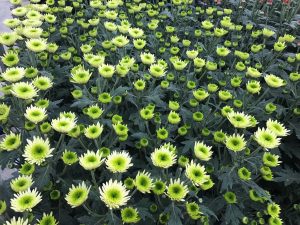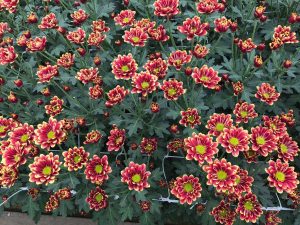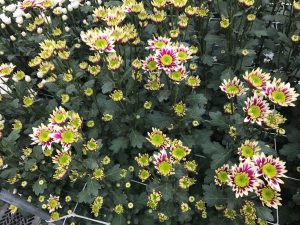Jasmine
 Jasmine (taxonomic name Jasminum /ˈjæsmᵻnəm/) is a genus of shrubs and vines in the olive family (Oleaceae). It contains around 200 species native to tropical and warm temperate regions of Eurasia, Australasia and Oceania. Jasmines are widely cultivated for the characteristic fragrance of their flowers.
Jasmine (taxonomic name Jasminum /ˈjæsmᵻnəm/) is a genus of shrubs and vines in the olive family (Oleaceae). It contains around 200 species native to tropical and warm temperate regions of Eurasia, Australasia and Oceania. Jasmines are widely cultivated for the characteristic fragrance of their flowers.
A number of unrelated plants contain the word “Jasmine” in their common names. Jasmine can be either deciduous (leaves falling in autumn) or evergreen (green all year round), and can be erect,[[ spreading, or climbing shrubs and vines. Their leaves are born,
opposite or alternate]]. They can be simple, trifoliate, or pinnate. The flowers are typically around 2.5 cm (0.98 in) in diameter. They are white or yellow in color, although in rare instances they can be slightly reddish. The flowers are borne in cymose clusters with a minimum of three flowers, though they can also be solitary on the ends of branchlets. Each flower has about four to nine petals, two locules, and one to four ovules.
They have two stamens with very short filaments. The bracts are linear or ovate. The calyx is bell-shaped. They are usually very fragrant. The fruits of jasmines are berries that turn black when ripe.


Reference.
Pom Pom
 Chrysanthemums (/krɪˈsænθəməm/), sometimes called mums or chrysanths, are flowering plants of the genus Chrysanthemum in the family Asteraceae. They are native to Asia and northeastern Europe. Most species originate from East Asia and the center of diversity is in China. There are countless horticultural varieties and cultivars. he name “chrysanthemum” is derived from the Ancient Greek: χρυσός chrysos (gold) and Ancient Greek: ἄνθεμον anthemon (flower).The genus once included more species, but was split several decades ago into several genera, putting the economically important florist’s chrysanthemums in the genus Dendranthema. The naming of the genera has been contentious, but a ruling of the International Botanical Congress in 1999 changed the defining species of the genus to Chrysanthemum indicum, restoring the florist’s chrysanthemums to the genus Chrysanthemum.
Chrysanthemums (/krɪˈsænθəməm/), sometimes called mums or chrysanths, are flowering plants of the genus Chrysanthemum in the family Asteraceae. They are native to Asia and northeastern Europe. Most species originate from East Asia and the center of diversity is in China. There are countless horticultural varieties and cultivars. he name “chrysanthemum” is derived from the Ancient Greek: χρυσός chrysos (gold) and Ancient Greek: ἄνθεμον anthemon (flower).The genus once included more species, but was split several decades ago into several genera, putting the economically important florist’s chrysanthemums in the genus Dendranthema. The naming of the genera has been contentious, but a ruling of the International Botanical Congress in 1999 changed the defining species of the genus to Chrysanthemum indicum, restoring the florist’s chrysanthemums to the genus Chrysanthemum.
The other species previously included in the narrow view of the genus Chrysanthemum are now transferred to the genus Glebionis. The other genera separate from Chrysanthemum include Argyranthemum, Leucanthemopsis, Leucanthemum, Rhodanthemum, and Tanacetum.
Wild Chrysanthemum taxa are herbaceous perennial plants or subshrubs. They have alternately arranged leaves divided into leaflets with toothed or occasionally smooth edges. The compound inflorescence is an array of several flower heads, or sometimes a solitary head. The head has a base covered in layers of phyllaries. The simple row of ray florets are white, yellow or red; many horticultural specimens have been bred to bear many rows of ray florets in a great variety of colors. The disc florets of wild taxa are yellow. The fruit is a ribbed achene. Chrysanthemums, also known as ‘mums’, are one of the prettiest varieties of perennials that start blooming early in the fall. This is also known as favorite flower for the month of November.
Reference.
Pompom flower












 Jasmine (taxonomic name Jasminum /ˈjæsmᵻnəm/) is a genus of shrubs and vines in the olive family (Oleaceae). It contains around 200 species native to tropical and warm temperate regions of Eurasia, Australasia and Oceania. Jasmines are widely cultivated for the characteristic fragrance of their flowers.
Jasmine (taxonomic name Jasminum /ˈjæsmᵻnəm/) is a genus of shrubs and vines in the olive family (Oleaceae). It contains around 200 species native to tropical and warm temperate regions of Eurasia, Australasia and Oceania. Jasmines are widely cultivated for the characteristic fragrance of their flowers.

 Chrysanthemums (/krɪˈsænθəməm/), sometimes called mums or chrysanths, are flowering plants of the genus Chrysanthemum in the family Asteraceae. They are native to Asia and northeastern Europe. Most species originate from East Asia and the center of diversity is in China. There are countless horticultural varieties and cultivars. he name “chrysanthemum” is derived from the Ancient Greek: χρυσός chrysos (gold) and Ancient Greek: ἄνθεμον anthemon (flower).The genus once included more species, but was split several decades ago into several genera, putting the economically important florist’s chrysanthemums in the genus Dendranthema. The naming of the genera has been contentious, but a ruling of the International Botanical Congress in 1999 changed the defining species of the genus to Chrysanthemum indicum, restoring the florist’s chrysanthemums to the genus Chrysanthemum.
Chrysanthemums (/krɪˈsænθəməm/), sometimes called mums or chrysanths, are flowering plants of the genus Chrysanthemum in the family Asteraceae. They are native to Asia and northeastern Europe. Most species originate from East Asia and the center of diversity is in China. There are countless horticultural varieties and cultivars. he name “chrysanthemum” is derived from the Ancient Greek: χρυσός chrysos (gold) and Ancient Greek: ἄνθεμον anthemon (flower).The genus once included more species, but was split several decades ago into several genera, putting the economically important florist’s chrysanthemums in the genus Dendranthema. The naming of the genera has been contentious, but a ruling of the International Botanical Congress in 1999 changed the defining species of the genus to Chrysanthemum indicum, restoring the florist’s chrysanthemums to the genus Chrysanthemum.










